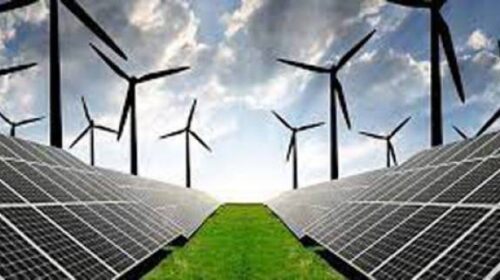ISLAMABAD-Many households and businesses are seeking ways to generate power through their own sources due to the rising costs of electricity. Wind turbines are a terrific method to produce sustainable energy, lower the carbon footprint, and minimise energy costs.
Rabia Liaquat, Head of the Department at Energy Systems Engineering, National University of Sciences and Technology (NUST), told WealthPK that compared to conventional wind turbines, the wind turbine developed by NUST is omnidirectional (can catch wind from all directions) and directs the wind flow to a flow duct with double velocity. She said that omnidirectional turbines are often smaller, lighter, and easier to maintain than traditional turbines. Thus, they can provide a more cost-effective energy production solution. In addition, she said, consumers can utilise omnidirectional turbines in a broader range of places, including urban regions where conventional turbines would be unfeasible. “Wind turbines with omnidirectional motion will gradually increase their share to meet our increasing energy demands,” she added. Rabia explained that these turbines could be used commercially and domestically without harming the environment. She said industrial settings typically use them to generate energy for manufacturing and other processes. “This turbine can be installed anywhere in a city at any altitude, thus benefiting a large population. People can install turbines in their homes, offices, campgrounds, and rural areas to produce electricity from them,” she said.
Rabia said the lifespan of a wind turbine is determined by a number of factors, including the construction material, operating environment, and the level of maintenance. The majority of turbines have a lifespan of 20 to 25 years and a payback period of three to four years. She explained that wind turbines convert kinetic energy from the wind into mechanical energy. Electricity is then generated from this energy. Turbine blades are connected to a rotor, which is connected to a generator. During blade rotation, the rotor turns, powering the generator and generating electricity. “The amount of electricity that can be generated by a turbine depends on the speed and direction of the wind, as well as the size and efficiency of the turbine. Nevertheless, even a small turbine can generate a significant amount of electricity, making it an important tool in our fight against climate change,” Rabia added. According to the Global Wind Atlas, Pakistan possesses an abundance of excellent wind resource potential. Pakistan wind corridors have average wind speeds of 7.87 meters per second. By properly utilising the wind resource, Pakistan can overcome a severe energy crisis that has touched all economic sectors directly and indirectly. The country may generate electricity from a combination of renewable and non-renewable sources. According to the World Bank, expanding renewable energy can cut the cost of electricity, improve energy security, lower carbon emissions, and save Pakistan up to $5b over next two decades.






